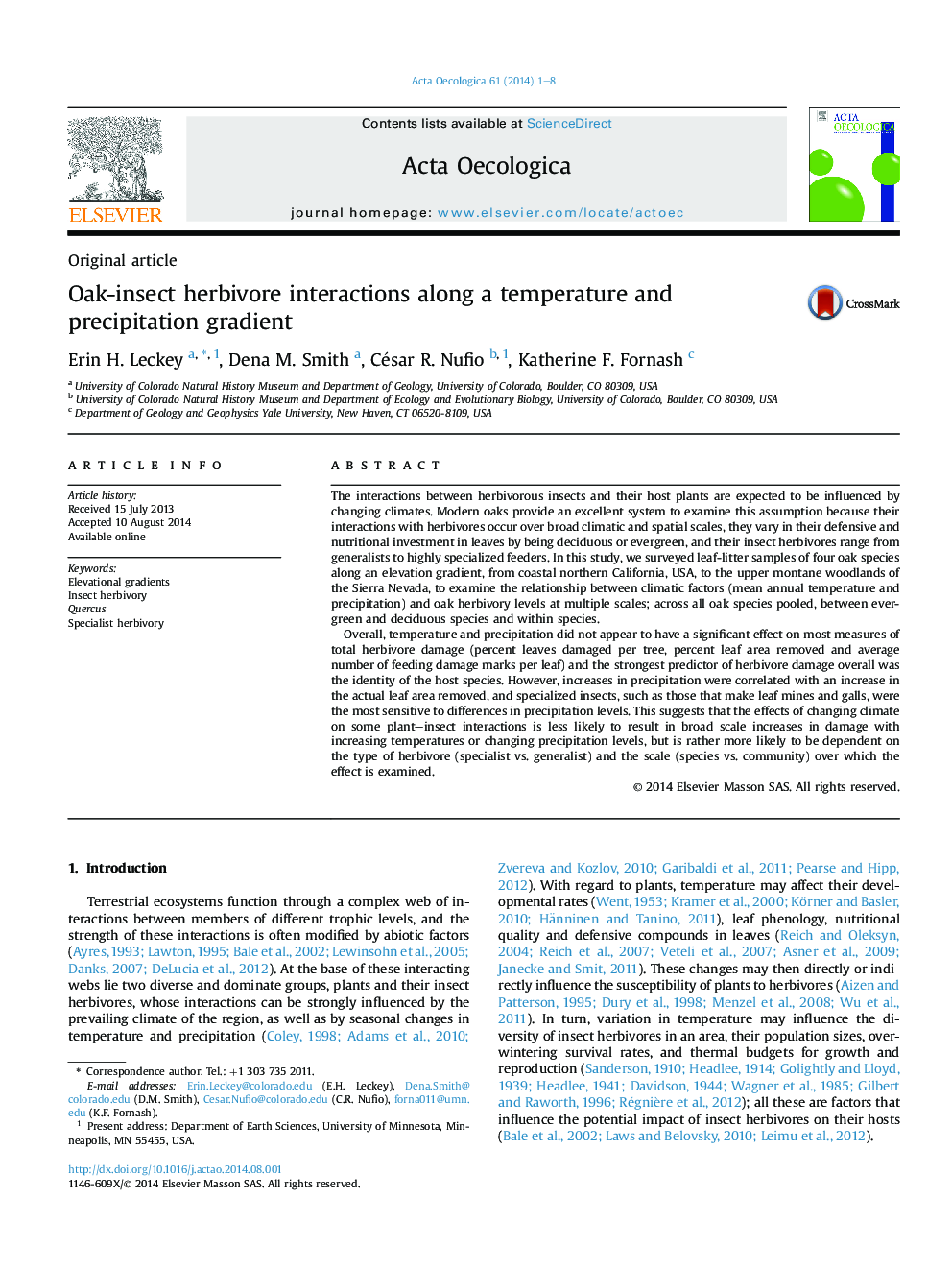| Article ID | Journal | Published Year | Pages | File Type |
|---|---|---|---|---|
| 6297393 | Acta Oecologica | 2014 | 8 Pages |
Abstract
Overall, temperature and precipitation did not appear to have a significant effect on most measures of total herbivore damage (percent leaves damaged per tree, percent leaf area removed and average number of feeding damage marks per leaf) and the strongest predictor of herbivore damage overall was the identity of the host species. However, increases in precipitation were correlated with an increase in the actual leaf area removed, and specialized insects, such as those that make leaf mines and galls, were the most sensitive to differences in precipitation levels. This suggests that the effects of changing climate on some plant-insect interactions is less likely to result in broad scale increases in damage with increasing temperatures or changing precipitation levels, but is rather more likely to be dependent on the type of herbivore (specialist vs. generalist) and the scale (species vs. community) over which the effect is examined.
Related Topics
Life Sciences
Agricultural and Biological Sciences
Ecology, Evolution, Behavior and Systematics
Authors
Erin H. Leckey, Dena M. Smith, César R. Nufio, Katherine F. Fornash,
